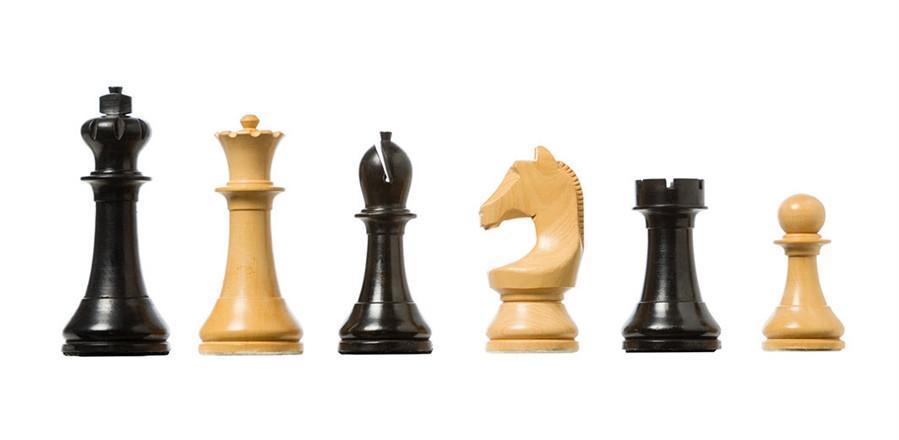 The design of the World Chess Championship Chess Set affords more than a respectful nod to the Staunton set |
| Classical Staunton  The height and bases of the pieces are defined by the classical Staunton set. It is only the Knights that differ; as defenders of the King and Queen and the only pieces that 'jump' over other, the base does follow the form of the others, but also resembles an equestrian hoof. Carrying through the Classical theme, Weil linked the eight major chess pieces to the eight columns of the facade of the Parthenon. When contemplating the height of the pieces he considered the pitch of the facade, so that the pieces before play would evoke the structure of a classical building. |
|
The heads are figurative and functional. A new crown for the |
 The felt beneath the pieces has been changed too. Green baize, the most common material beneath chess pieces, signified how chess had become a parlor game in the Victorian era along with cards, billiards and dice. This has been replaced with black and white felt to give chess its own construct and consistency. |
|
Daniel Weil Pentagram partner Daniel Weil has contributed a new chess set design to the world of chess. It will join the ranks of the original Staunton chess set, which has been the standard thus far.  Since joining Pentagram in 1992, Daniel has worked on Since joining Pentagram in 1992, Daniel has worked on projects that encompass a combination of product design, packaging, interiors and art direction for a broad range of clients that includes, among others, Swatch, Lego, Krug, Benetton, Tretorn, Superga, Pantone, EMI, Mothercare, coca-Cola, Grey Goose, TSE, King's college, Boots, Group G3/Quam, Granada Motorway Services, A Cafe, Cass Art, Oyuna, Mount Blanc, One & Only, the Bulgari Hotel in Milan, the Dorchester in London. Notably, Weil's design of the World Chess Championship Chess Set features the neoclassical, Greek-influenced aspects of the Staunton's design, but with more emphasis on certain details. |


 The 'human' pieces; King, Queen, Bishop and Pawn have hierarchical collars as indicators of nobility and piece value and have both a sculptural dimension and functional one, allowing players to hold the piece with 'South hold.'
The 'human' pieces; King, Queen, Bishop and Pawn have hierarchical collars as indicators of nobility and piece value and have both a sculptural dimension and functional one, allowing players to hold the piece with 'South hold.'



